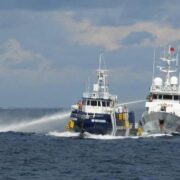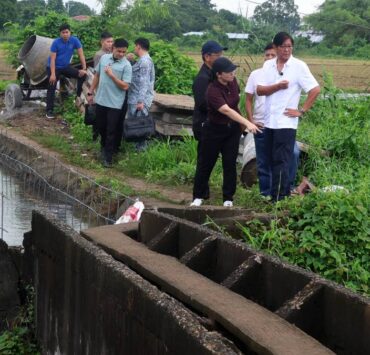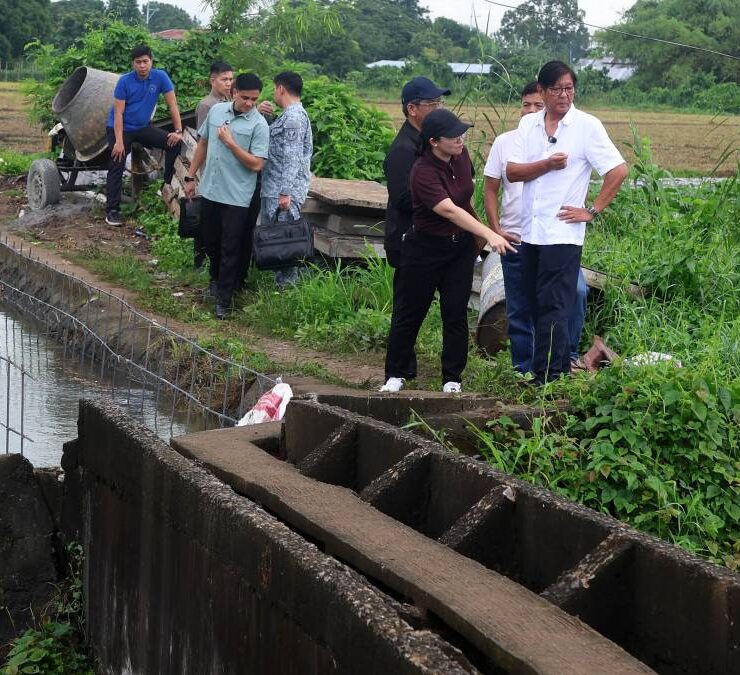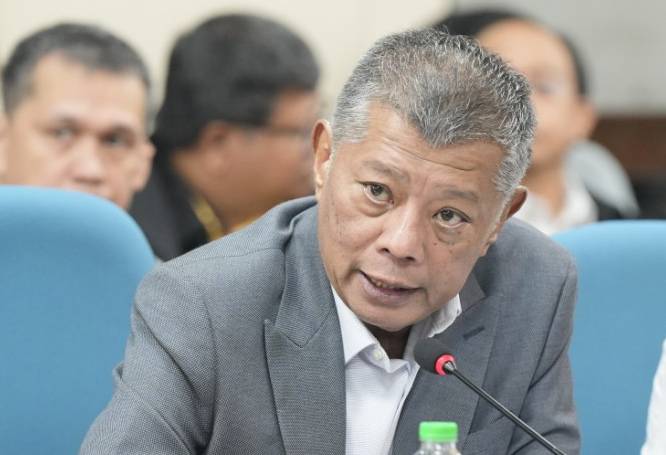Chinese fleet ‘closest’ ever to Pag-asa island
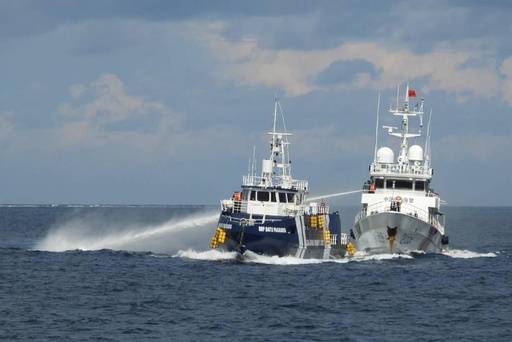
Chinese maritime forces operated “very close” to Pag-asa (Thitu) Island over the weekend, deploying a flotilla to harass Sunday’s humanitarian mission for local fishermen, Philippine Coast Guard (PCG) spokesperson for West Philippine Sea Commodore Jay Tarriela said on Monday.
That fleet, consisting of more than 15 Chinese maritime militia ships, five China Coast Guard (CCG) vessels, a People’s Liberation Army Navy (PLA-N) ship, and a helicopter harassed Bureau of Fisheries and Aquatic Resources (BFAR) vessels as close as 3 to 3.3 kilometers (1.6 to 1.8 nautical miles) from the island’s shores.
“This is the closest the Chinese coast guard has harassed and bullied BFAR vessels,” Tarriela said in a briefing on Monday. “It is very close to Pag-asa Island.”
He said the Chinese ships used water cannons three times against the BFAR vessels during an aid distribution for local fishermen.
BFAR deployed six vessels to the area, including BRP Datu Pagbuaya, BRP Datu Bankaw and BRP Datu Daya.
The water cannon gusts from a CCG ship with hull No. 21559 struck BRP Datu Bankaw and BRP Datu Pagbuaya on separate occasions. Earlier that Sunday, CCG 21559 also rammed and attacked the Pagbuaya with water cannons.
CCG 23519 also rammed and fired its water cannon at BRP Datu Daya.
Direct orders
Tarriela said the BFAR ships did not sustain damage from the water cannons, but the Datu Daya suffered minor damage from the ramming.
In a rare move, Qiong Sansha Yu activated its water cannon near BRP Datu Bankaw but did not hit it directly.
Tarriela said this was not the first time a Chinese militia ship had used water cannons, recalling a similar incident in 2023, without providing further details.
He said the incident shows Chinese militia ships were taking direct orders from the CCG.
“It appears that the Chinese maritime militia and Chinese coast guard operate with better coordination compared to the PLA-Navy and the Chinese coast guard,” he said.
Not expelled
CCG spokesperson Liu Dejun said the CCG “took necessary control measures against the Philippine vessels in accordance with law and expelled them, with on-site operations [that were] professional, up to standard, legitimate and lawful.”
Liu’s remarks were quoted by a report from state-run Global Times.
Tarriela, however, denied that the BFAR ships were expelled.
The PCG called on its Chinese counterpart to investigate the attacks, denouncing the latest aggression as a grave violation of international maritime law. Manila urged Beijing to observe the rule of law and ensure the safety of all vessels in the West Philippine Sea.
China’s use of water cannons during missions near Philippine-controlled Pag-asa Island began only this year, with the latest incident marking the second occurrence.
The first incident happened in May, when two BFAR ships were on a routine mission with a team of scientists collecting sand samples at Pag-asa Cay 2 (Sandy Cay).
Unlike the latest mission, which involved four Chinese ships using water cannons, the May mission saw only one CCG ship fire its water cannon.
The latest Chinese harassment occurred well within the territorial waters of Pag-asa Island, which is part of the municipality of Kalayaan in Palawan province.
Having exercised effective control over the island, Manila asserts sovereignty within the 22-km (12-nautical-mile) territorial sea of Pag-asa Island, which lies beyond the West Philippine Sea.
The largest maritime feature in the Kalayaan Island Group has an airfield and a naval base and is home to around 500 residents, including troops, law enforcement personnel and civilian government staff.
Planned visit
Think tank Stratbase Institute on Monday condemned China’s “brazen acts of aggression.”
“The growing frequency and intensity of these incidents are deeply alarming,” Stratbase said in a statement. “This behavior should not and cannot be normalized or tolerated.”
Last week, maritime expert Ray Powell urged a US Senate subcommittee to include Pag-asa Island in its next regional visit to show support for Manila amid Beijing’s aggression.
Responding to this suggestion, Tarriela said, “that’s a nice thing to know,” but he deferred to the Department of Foreign Affairs (DFA) to respond further.
‘Epic act of disregard’
In a statement read by Palace press officer Claire Castro during her briefing on Monday, PCG commandant Adm. Ronnie Gil Gavan said China’s aggression in waters off Pag-asa “is very concerning because if we, [the] Coast Guard, become violators of the law and pose threats to the safety of life and property at sea, a contradiction of our fundamental duty, then who else will safeguard and protect those who travel at sea?”
Gavan said the “intentional” ramming of BRP Datu Daya was not only a violation of the 1972 Convention on International Regulations for Preventing Collisions to which both the Philippines and China are both signatories, but also “an epic act of disregard of its supposed reason for existence.”
He called on Maj. Gen. Wang Zhongcai, director commandant of the CCG, to “seriously look” into the action of his sailors.
“We have inherent universal commitment to the international community of civilized maritime nations to keep. Lest we forget, we are Coast Guard,” Gavan said.
The DFA earlier said it would file a diplomatic protest against the Sunday attack on the BFAR vessel.
The National Maritime Council (NMC) also denounced the CCG’s “illegal and reckless actions” in the waters of Pag-asa Island as a “grave concern” for the country.
It stressed the Philippines was “clearly within its rights to conduct routine maritime operations in and around Pag-asa Island and will continue to do so.”
“China has no right to interfere with these lawful and routine activities,” the NMC said, as it urged Beijing to be sincere in its call for peaceful dialogue by “desisting from all provocative actions” in the West Philippine Sea.


